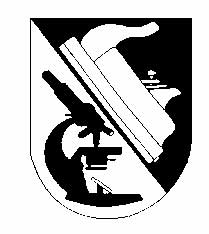|
Submission guidelines for WAG Postprints
(last updated 4/08)
TEXT:
Please submit a paper, not a talk. This means eliminating references to
"the slide on the left" and "the slide on the right"
and any other remarks not compatible with a printed paper. Footnotes and
bibliographies are optional, if you include them, please use some sort
of recognized, standardized format.
All text must be in electronic format. Please send a Word or rtf file,
on disk or as an email attachment. Don't send a pdf file or Powerpoint (ppt) file.
When typing manuscript, do not use tabs, indents or underlines, or type
in all capital letters.
***Do NOT embed images in text file.***
Abstracts and bios will be printed if included.
Include byline as you want it to appear.
All captions should be listed together in order at the end of the paper.
Insert [fig. XX] in manuscript where it should appear, and the figure
will be placed as close to that point as possible. Please double check
to make sure numbering is clear and correct. Please make sure the file
and the printed copy are the same version of the paper.
IMAGES:
A maximum of TEN images per paper is permitted. ***WHEN SELECTING IMAGES,
REMEMBER THEY ARE BEING PRINTED IN BLACK & WHITE!!!*** So, rewrite
text where necessary so you are not referring to colors nobody will be
able to see. Charts, tables, graphs, diagrams, and appendices all count
towards the total. Label all images with your last name and fig. #.
ACCEPTABLE:
Color slides
Color negatives
Black & white negatives
Good quality black & white prints between 5"X7" and 8.5"X11"
Digital images on CD or DVD (see below)
NOT ACCEPTABLE:
Color prints
Copyrighted images of any sort!
Previously published (halftoned) images
Copystand work (slides shot from books)
Anything photocopied out of a copyrighted publication
LINE ART:
Printed charts, diagrams, graphs must be clean and clear, in black and
white or gray scale, (no color) unfolded and unwrinkled. Maximum size:
8.5" x 14". Tables must be in machine readable format. Save
them as a separate file. For digital charts or graphs, vector (eps) files
are preferable to bitmap files.
DIGITAL IMAGES: Send minimally compressed jpgs, tifs or as Photoshop
files. Each image should be a separate file. If you are editing image files, don't flatten the file, send the layered Photoshop file. Title each image with YOUR LAST NAME and fig. #. NO POWERPOINT FILES!
********IMPORTANT INFO ON RESOLUTION*********
An uncompressed Photoshop file should be at least 2MB. This is approx.
5" X 7" at 150 pixels per inch, or around 750 pixels by 1100
pixels. This is the MINIMUM in order to ensure enough resolution for printing.
If the image needs cropping, double the size. If you want to scan your
own slides, they should be scanned at a minimum of 1600 ppi if uncropped,
more if cropping is needed. Don't try to up-res a too small image.
If you put images on a CD or DVD, make sure it is both PC and Mac compatible
(hybrid). If you don't know how to do this, don't send a CD.
ACCEPTED MEDIA: CD, DVD or email. If you use email, you still
have to snail mail a printout of your paper.
Slides and prints will be returned at proofing phase. Images are not
insured, so don't send your only copies.
All Postprints will also be put on our website, unless I get a specific
written request saying you don't want your paper included. Electronic
publishing is not required to be in the printed publication, but it will
be presumed unless an author requests otherwise. This is another reason
why it is very important to not submit any copyrighted images. We don't
want to get sued.
All mailed material should be submitted as ONE complete package.
Send to:
Shadows and Light Design
1494 Monkton Rd.
N. Ferrisburg, VT 05473
Send email submissions to jenniebaker at gmail dot com
When the publication is assembled, authors will receive copies for proofing.
This proofing is to correct errors and typos only, not for editing or
rewrites. Authors will be given at least two weeks for review. Final responsibility
for the accuracy of the information presented remains with the authors.
|



